Effective procurement is a vital function within any business, capable of making substantial contributions to an organization’s efficiency and financial prosperity when executed proficiently.
Despite its widespread impact, the process of procurement is often underappreciated in the hustle and bustle of everyday operations. Successful procurement operations may appear to be effortless, but for the individuals and expert teams that navigate its complexities, procurement is understood to require both method and discipline.
While there is a general outline for the procurement process, it’s important to keep in mind that the specifics are shaped by the needs and goals of each individual organization. Factors that will affect the procurement process stages include the size and location of the organization, the prevailing business model, the company structure, and budgetary and spending needs, among others.
We’ll cover the seven foundational stages that are typically employed in the procurement process.
-
Identify the need
-
Create and submit a purchase request
-
Evaluate and select suppliers/vendors
-
Negotiate the terms
-
Finalize the contract
-
Implement the сontract
-
Manage the supplier
 Identify the need
Identify the need
Procurement is driven by need, whether it’s producing a final product or service or acquiring the underlying products or services that aid in their creation. Depending on the company structure, this step might be managed by the business owners, department heads, executive team, staff, and/or procurement managers. During this initial procurement phase, these parties work to set a budget against the backdrop of the organization’s overall spending plans.
Stakeholders and procurement teams play crucial roles in defining purchasing needs within an organization. Effective collaboration between these groups ensures that the right products, services, and resources are acquired to meet business objectives.
Procurement teams partner closely with stakeholders to gather detailed requirements. This involves understanding the technical specifications, quality standards, quantity needed, delivery timelines, and any other critical parameters necessary to ensure success for each procurement phase. Stakeholders provide this information based on their expertise and understanding of the project or operational requirements.
 Create and submit a purchase request
Create and submit a purchase request
A purchase request (or purchase requisition) is a formal request for goods or services and is submitted using specialized procurement software. Oftentimes, the purchase request will originate with an employee or manager before being reviewed by the organization’s procurement team.
When a purchase request is approved, it becomes a purchase order. However, should the request be denied, it will typically be returned to the submitter with a brief explanation. A rejected purchase order, while not ideal, can be a good learning opportunity.
When a purchase order is rejected, it often indicates that something went wrong in the procurement process. It could be a mistake in the specifications, pricing, quantities, or other details.
By analyzing the reasons for rejection, the organization can identify the specific areas where mistakes were made and implement corrective measures. This helps prevent similar errors in future purchase orders. If the rejection was due to supplier-related issues, it offers an opportunity to engage with the supplier to discuss the problem and potential solutions. This interaction can lead to better communication, understanding, and collaboration between the organization and its suppliers. Strengthening supplier relationships can help to ensure that teams reach their procurement goals and improve future procurement outcomes.
 Evaluate and select suppliers/vendors
Evaluate and select suppliers/vendors
The next step is to assess various vendors who can fulfill the purchase order and choose one that meets the key requirements necessary to reach procurement goals. Notably, price shouldn’t be the sole determinant. Other factors that should be considered include ease of communication, company ethics, accountability, and production capacities. Added up, these factors provide a “big picture” procurement teams can use to evaluate vendors.
Some organizations maintain a catalog of approved vendors, featuring various suppliers that have already proven themselves. Others may need to start from scratch, particularly when the purchase order supports a new line of business or geography.
Supplier selection is a component of the procurement process steps that can range from standard to complex, with the exact approach determined by the requirement(s) at hand. Strategic Sourcing should be used for complex, custom, and long-term requirements; tactical buying is typically used with standard or simple short-term requirements. These two distinct approaches within the procurement process are each suited for different scenarios based on the nature of the purchase, its strategic importance, and the overall goals of the organization.
Below are two examples of situations where sourcing and tactical buying are appropriate:
Strategic Sourcing
If a manufacturing company requires a consistent and reliable supply of raw materials for its production processes, sourcing is essential.
Establishing strategic partnerships with suppliers helps secure the necessary materials, negotiate favorable terms, and maintain quality standards.
Tactical Buying
When equipment breaks down unexpectedly, the organization might need to quickly procure replacement parts or services.
Tactical buying ensures swift resolution of issues.
After a vendor has been selected, investing time and energy in the relationship is critical. A good relationship with a supplier can unlock better savings and service, delivering maximum value in the long term.
 Negotiate the terms
Negotiate the terms
Once you have chosen the best fit, it’s time to move on to contract negotiations. This is one of the most critical stages in successful procurement, as it serves as the legal framework for everything that follows.
During this stage, you will outline and agree to pricing—as well as details such as delivery schedules, recourse for missed orders or delays, and other specific terms and conditions. It is often useful to assess previous contracts to pinpoint opportunities for improvement, allowing you to potentially secure better terms going forward and address inadequacies in prior contracts.
 Finalize the contract
Finalize the contract
A contract can be finalized with a Purchase Order (PO), Master Service Agreement (MSA), or Statement of Work (SOW). A PO is used to order goods or services, an MSA establishes the overarching legal and operational framework for a business relationship, and an SOW defines the specific work to be done in a project or service engagement. These documents are often used together, with the MSA setting the general terms, the SOW specifying the project-specific details, and the PO defining the specific order details.
After the contract has been approved, the next stage is to finalize the PO. The contract typically governs the full buyer/supplier relationship, while a PO specifies the terms of an individual purchase.
This PO document can be considered as another formal contract, which details the following:

- Total costs/price
- Detailed description
of goods and/or services - Quantity
- Order date
- Delivery date
- Buyer’s contact information
- Supplier’s contact information
- Billing address
- Shipping address
- Payment method
- Payment due date
- Payment currency
- Shipping method
- Warranty information
- Name and title of the person who approved
the purchase - Date of authorization
- Any other specific terms and conditions
- With a final PO, you are ready to move to the final stage of the procurement process.
 Implement the сontract
Implement the сontract
Successfully implementing a new contract requires a structured approach and a series of actions to ensure that the new supplier or new relationship with an incumbent supplier can be seamlessly integrated into your organization’s operations. Here are the key actions needed to achieve a successful implementation:
- Communicate with business stakeholders about the new supplier agreement’s conditions and its impact on current processes. For new suppliers, host welcome meetings to introduce them to your organization and address any concerns or expectations.
- Provide necessary training on your company’s systems, products, services, and quality and safety standards.
- Conduct technology integration with your procurement or inventory management systems, including providing access to collaboration and communication tools. By following these steps, you can ensure smooth and successful contract implementation.
Effective vendor communication is crucial for managing orders in the procurement process and forming long-term relationships. As goods or services are delivered, it is important for the purchasing side, especially the end-user, to confirm that all contract and purchase order standards have been met. This includes verifying delivery deadlines, product quantities, and product quality. In the event of any issues, such as damaged products, clear communication with the vendor becomes essential. Promptly addressing delivery problems and maintaining open lines of communication helps to build a strong and long-term relationship with the vendor. By effectively managing vendor communication, the procurement process can be streamlined, and orders can be successfully fulfilled.
 Manage the supplier
Manage the supplier
Effective supplier management involves focusing on supplier performance, partnering to enhance value, and ensuring contract compliance. It is essential to establish clear performance expectations with defined KPIs and SLAs for mutual success. Ongoing supplier relationship management includes regular reviews, feedback sessions, and performance monitoring to drive quality, service, and cost improvements. Optimize your supplier management for success through maintaining open communications and clear escalation procedures, implementing quality control processes and tailored performance reports, and applying well-defined criteria for contract renewal or termination based on performance and evolving business needs.




